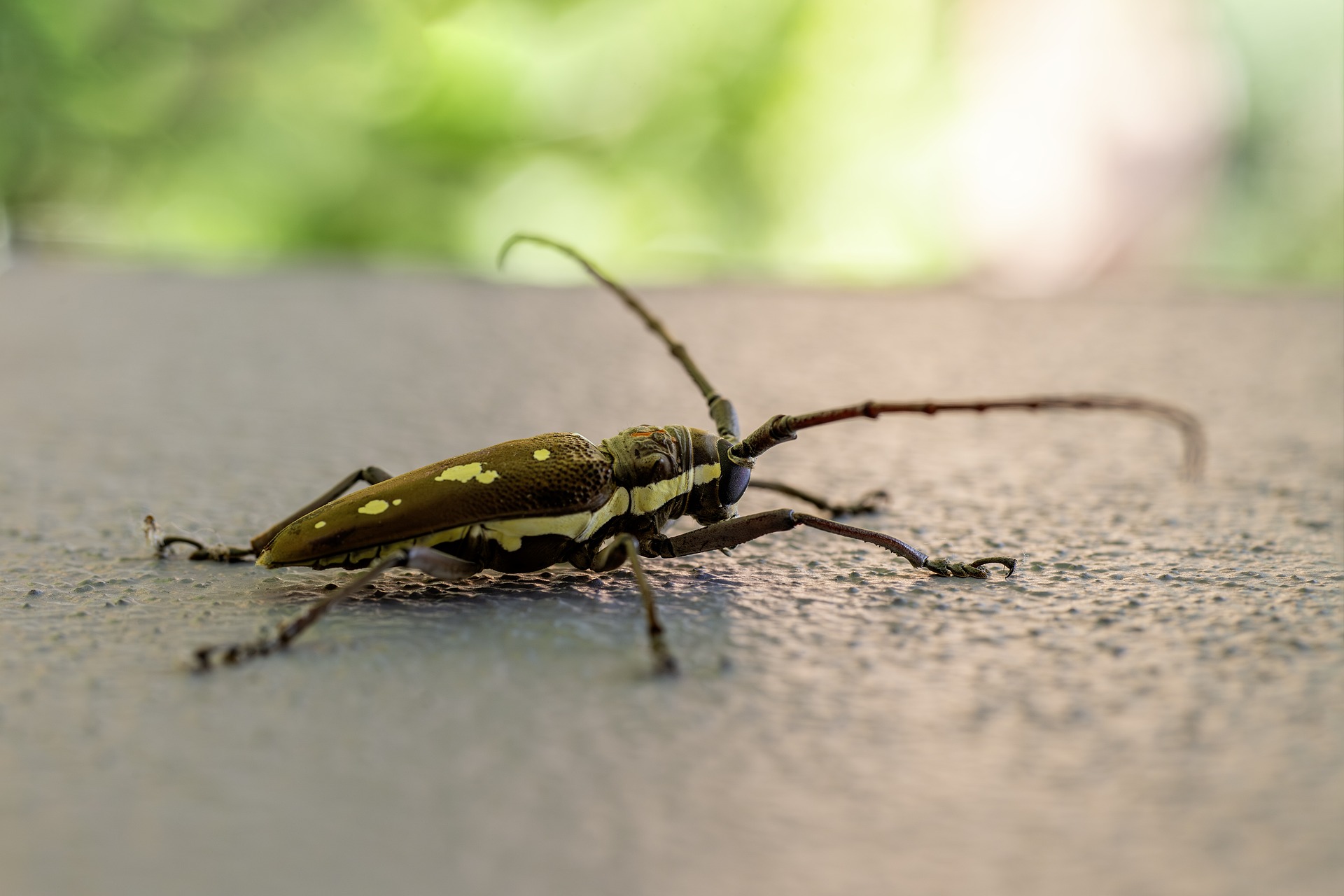The image you provided is of the Rubber Root Borer (Batocera rubus), a type of longhorn beetle. Here are some detailed features and characteristics of this beetle:
Appearance
- Size: The Rubber Root Borer is a large beetle, with adults typically ranging from 25 to 60 millimeters in length.
- Color: This beetle has a dark brown to black coloration, often with a glossy appearance. The elytra (wing covers) can sometimes have lighter spots or streaks.
- Morphology: Like other longhorn beetles, it has very long antennae, often as long as or longer than its body. The body is robust and cylindrical, with a pronounced head and strong mandibles.
Habitat
- Preferred Habitats: The Rubber Root Borer is usually found in forested areas, especially where host trees are abundant. It prefers tropical and subtropical regions.
- Geographic Range: This beetle is found in Southeast Asia, including countries like India, Malaysia, and Indonesia.
Behavior
- Feeding: The larvae of Batocera rubus are wood borers, feeding on the roots and lower trunks of various trees, including rubber trees, hence the common name “Rubber Root Borer.” Adults feed on tree bark and foliage.
- Life Cycle: The life cycle includes egg, larval, pupal, and adult stages:
- Eggs: Laid on the bark or roots of host trees.
- Larvae: The larvae bore into the wood, creating extensive tunnels. They can cause significant damage to the roots and lower trunks of trees.
- Pupae: Pupation occurs within the wood. The pupal stage can last several weeks to months.
- Adults: Emerge from the wood and are active during the night. They are strong fliers and can cover considerable distances in search of mates and new host trees.
Economic and Ecological Impact
- Tree Damage: The larvae of the Rubber Root Borer can cause substantial damage to rubber trees and other hardwoods, leading to reduced tree health and productivity. This makes them a significant pest in rubber plantations and other forestry operations.
- Control Measures: Management of this beetle involves monitoring tree health, removing and destroying infested wood, and using chemical treatments when necessary. Biological control methods are also being researched.
Interesting Facts
- Longevity: The adult beetles have a relatively long lifespan for insects, often living several months. This allows them to cause considerable damage during their adult stage.
- Antennae: The long antennae of Batocera rubus are sensory organs that help the beetle navigate its environment and locate mates.
Identifying Batocera rubus
- Distinctive Features: The large size, dark coloration, and long antennae are key identifying features. The beetle’s association with rubber trees and other specific host plants can also aid in identification.
In summary, the Rubber Root Borer (Batocera rubus) is a large longhorn beetle known for its wood-boring larvae that can cause significant damage to rubber trees and other hardwoods. It is primarily found in tropical and subtropical regions of Southeast Asia and poses both economic and ecological challenges due to its impact on forestry and plantation health.
Visited 114 times, 21 visit(s) today
Views: 150
Subscribe to the newsletter:
